Have you looked at your smile lately? Sometimes we don't even realize how much damage we've done to our teeth over the years until a close-up photo is taken or until your dentist mentions that you have worn-down teeth. We get a similar feeling about our weight when we look at an older photo to realize just how many pounds we've gained. But with worn down teeth, what does that exactly mean?
Types of problems
Many people are unaware they have worn down the top layer of enamel on their front teeth or the grinding surfaces of their molar teeth due primarily to clenching or grinding. The long-term results could be damaging if not corrected or evaluated.
Some individuals may have shorter-looking front teeth or teeth with crack lines or wear that eventually will need treatment because sensitivity or aesthetics become a problem. Sometimes the habits of grinding and clenching affect the gum tissues around the teeth or cause loose teeth or advanced periodontal disease. The way teeth are aligned with or without having had braces could have an affect on your occlusion - how the teeth from upper and lower arches come together when the mouth is closed - as well.
Some individuals may notice their back molars are flattened or have pits on them, which alters the height and contour of their molars. How does this damage occur? When your molars look as if there are "pot holes on the surfaces" clenching or the squeezing together of your teeth is the cause. Everyone clenches to some degree and damage most always does occur. However, the amount of damage depends on the amount and intensity of the clenching trauma.
When your back molars look very flat - where an "aircraft carrier could take off on the flat surface" - bruxism is the culprit. Bruxism is the grinding of teeth or the clenching of jaws. It really is not much different than clenching. The clinical signs help to determine whether you are either a clencher or bruxer or both.
Bruxism is derived from the Greek word "brychein" which means, "gnashing of teeth." Bruxism affects a 50 to 95 percent of adults. It is commonly a disorder that occurs during sleep and affects 30 to 40 million Americans on a nightly basis. Three out of every 10 kids will clench or grind. Surprisingly, the higher incidence of bruxism is with children younger than 5 years of age. Usually, childhood bruxism is outgrown by adolescence. If bruxism is caused by stress - in an adult or child - it will continue until the stress is relieved.
Consequences
Both clenching and grinding can cause dental damage to your teeth as well as possible occlusal-muscular problems such as irritation to the muscles of the head and neck. Muscular problems can eventually lead to pain in your jaw joints and ear pain. Problems resulting from teeth clenching/grinding accumulate slowly over time, which lead to more severe problems. According to TMJ Association Ltd., Temporomandibular Joint And Muscle Disorders refer to a complex and poorly understood set of conditions that can cause pain in the area of the jaw joint and associated muscles and/or problems using the jaw. Both or just one of the TM joints may be affected. TMJDs can even affect a person's ability to speak, eat, chew, swallow, make facial expressions and breathe.
The damage caused by clenching and grinding includes wearing of teeth, breaking of teeth, sensitive teeth, and loose teeth with other symptoms such as receding gums and sore jaw muscles. If the damage is not advanced, your dentist can make you a mouthguard/occlusal guard to protect you from grinding or wearing down any more tooth structure. For those who have gone too long without treatment, a full mouth evaluation may be needed for proper full mouth rehabilitation. A referral to a specialist might be the answer for some individuals because the problem goes beyond their teeth.






